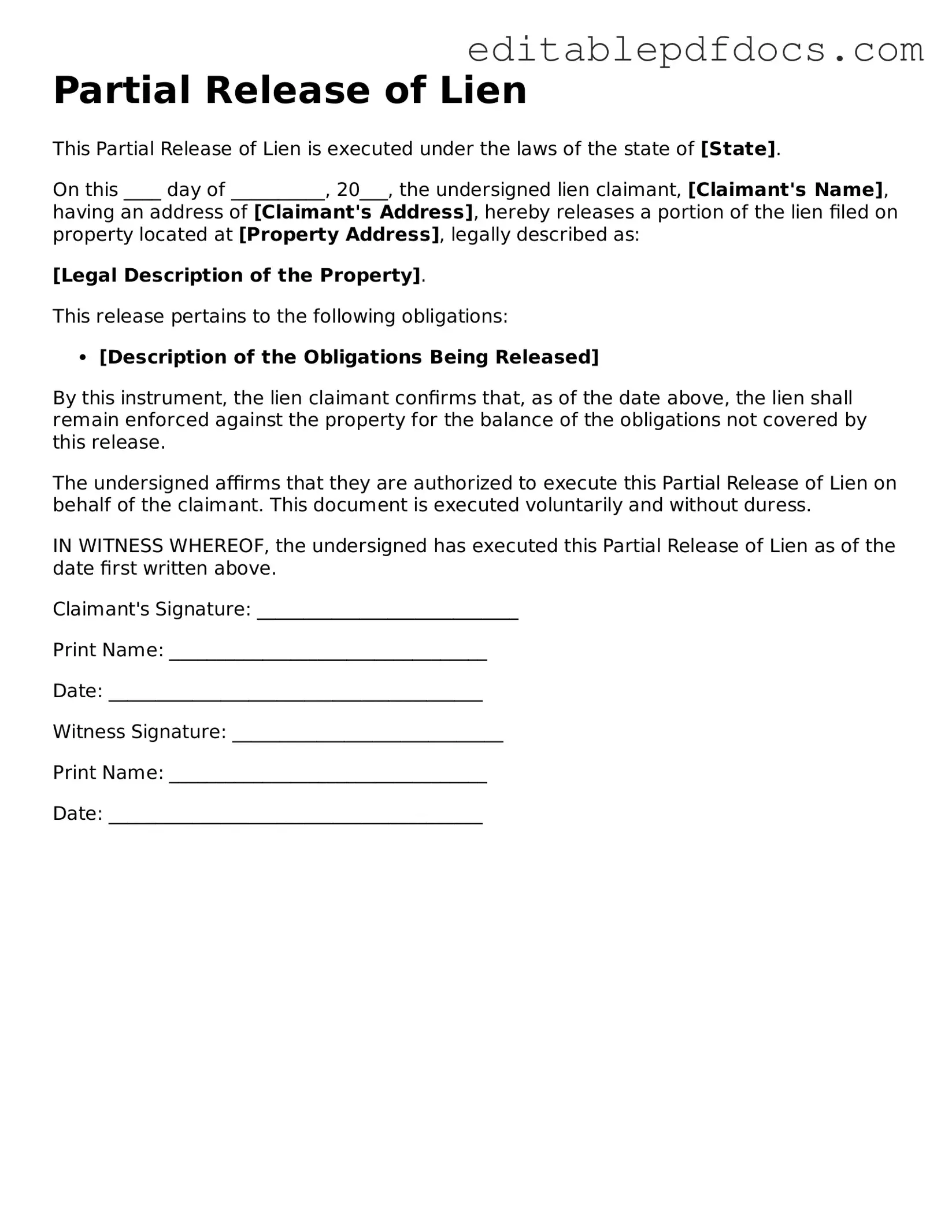Filling out a Partial Release of Lien form can be straightforward, but several common mistakes can lead to complications. One frequent error is failing to provide complete and accurate information. This includes not filling in the names of the parties involved or omitting the legal description of the property. Missing details can render the document invalid, causing delays in the release process.
Another mistake is not signing the form. It may seem obvious, but some individuals forget to provide their signature or the signature of the authorized representative. Without a signature, the form lacks legal authority and cannot be processed. Additionally, some people overlook the need for notarization, which is often required to validate the document.
Incorrectly identifying the lien being released is also a common issue. Individuals may confuse different liens or fail to specify which lien is being partially released. This can lead to confusion and may not effectively clear the intended portion of the lien. It is essential to review all lien documents carefully to ensure accuracy.
Another area of concern is not including the correct date of the release. The date serves as a crucial reference point for the lien's release. An incorrect date can create complications, especially if disputes arise regarding the timing of the release.
People sometimes neglect to check for any outstanding obligations. If there are remaining amounts owed under the original agreement, a partial release may not be appropriate. Failing to address these obligations can lead to future legal complications.
Omitting the necessary supporting documentation is another mistake. Often, additional documents, such as proof of payment or prior agreements, are needed to accompany the Partial Release of Lien form. Without these documents, the release may not be accepted.
Some individuals do not keep copies of the submitted form. Retaining a copy is vital for personal records and may be needed for future reference. Without a copy, proving the release may become difficult if any disputes arise later.
Another common error is submitting the form to the wrong office or jurisdiction. Each state may have different requirements regarding where to file a Partial Release of Lien. Ensuring the correct submission location is essential to avoid delays.
Finally, many people fail to follow up after submitting the form. Confirming that the release has been processed and recorded is crucial. A lack of follow-up can lead to uncertainty about the status of the lien and potential legal issues down the line.
